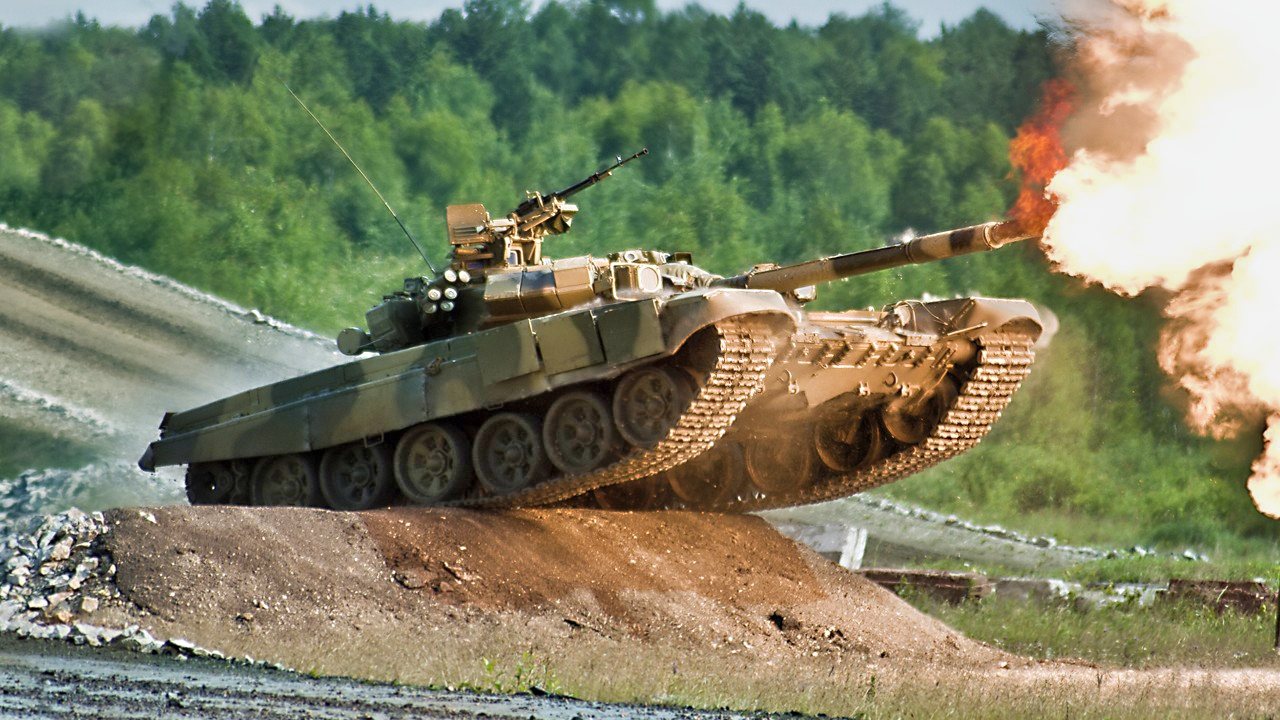Amphibious Hovering Tank: Why Russia's Dream Weapon Failed
Officially known as the Amphibious Hovering Tank, this creative craft was first developed in 1937 – two years before the Red Army's forays into Poland and Finland – by a team of engineers led by the brilliant professor Vladimir Israilevich Levkov, aged 42 at the time.
Amphibious Hovering Tank, Explained - The Soviet Communist system by its very nature eschewed entrepreneurialism. However, even under the dark days of Joseph Stalin, inventiveness and creative thinking could still somewhat abide the lack of a profit incentive. Soviet Cold War history is replete with examples of weapons innovations, from Mikhail Kalashnikov's ubiquitous Avtomat Kalashnikova AK-47 assault rifle and the 9x188 Pistolet Makarovka (Makarov pistol), to the MiG-15 jet fighter and the T-34 tank.
Speaking of Soviet tanks, though, a fair number of them were certainly creative to the point of being downright weird-looking, yet did not quite stand the test of time. One of these ill-fated armored inventions was the hovercraft tank.
Professor Levkov's Brainchild: Amphibious Hovering Tank
Officially known as the Amphibious Hovering Tank, this creative craft was first developed in 1937 – two years before the Red Army's forays into Poland and Finland – by a team of engineers led by the brilliant professor Vladimir Israilevich Levkov, aged 42 at the time. Leskov was almost fated to be an inventor, having been born in 1895 in the industrial city of Rostov-on-Don (a city also famous for being the longtime home of Aleksandr Solzhenitsyn).
Levkov graduated from the Donskoi Polytechnic Institute in Novocherkassk in 1921, and eight years later he was appointed professor at the Applied Aerodynamics Department. In 1935, he made history when he invented the world's first hovercraft, the L-1 air-cushion vehicle. The L-1 had a maximum speed of approximately 60 knots when powered by three engines, and 38 knots when powered by two.
The Amphibious Hovering Tank was directly inspired by the L-1. As Russia Beyond columnist Boris Egorov notes, "Soviet designers came up with the idea of creating the ideal combat vehicle, able to overcome deserts, ice, deep snow, rivers, and swamps."
Had the Zemnovodnyy podletayushchiy tank actually come to fruition, it would have had a two-man crew, a length of 10 meters (33 feet), a weight of 8.5 tons, and a max speed of 120 kph (75 mph). Its armor was thin: 13mm in the hull and turret front, 10mm on the hull and turret side. Armament was also minimal, consisting of a single a 7.62x54mmR Degtyarev light machine gun, which used the same caliber cartridge as the Red Army's famed Mosin-Nagant infantry and sniper rifle made famous by the likes of Lyudmila Pavliechenko and Vasily Zaitsev. Presumably the craft would rely more on speed than armor or armament for survival, hovering 200–250mm above water or ground surfaces.
The crew would have included a driver who sat behind the forward propeller, and a commander/gunner who operated the cylindrical rotating turret. The tank would have been powered by two Shvetsov M-25 aircraft engines. These engines were also used in the Red Air Force by fighter planes such as the Polikarpov I-16 Rata ("Rat") and the Polikarpov I-153 Chaika ("Seagull").
The Project Never Lifted Off
Alas, the project was abandoned for unknown reasons. It was long presumed that the hover tank never even left the mock-up phase, but photos recently uncovered by Guns.Com columnist Max Slowik indicate that a prototype was actually built, and it had a bigger gun and thicker armor than the original specifications called for. However, the exact specifications are still unavailable, so the Amphibious Hovering Tank has to be relegated to the status of a mere curiosity – one of history's obscure oddballs.

As for its inventor, Professor Vladimir Leskov, he died of a brain hemorrhage on Jan. 2, 1954, two days after suffering an apoplectic attack at his institute. He was laid to rest at the Golovinskoye cemetery in Moscow.
About the Author
Christian D. Orr is a former Air Force officer, Federal law enforcement officer, and private military contractor (with assignments worked in Iraq, the United Arab Emirates, Kosovo, Japan, Germany, and the Pentagon). Chris holds a B.A. in International Relations from the University of Southern California (USC) and an M.A. in Intelligence Studies (concentration in Terrorism Studies) from American Military University (AMU). He has also been published in The Daily Torch and The Journal of Intelligence and Cyber Security. Last but not least, he is a Companion of the Order of the Naval Order of the United States (NOUS).


